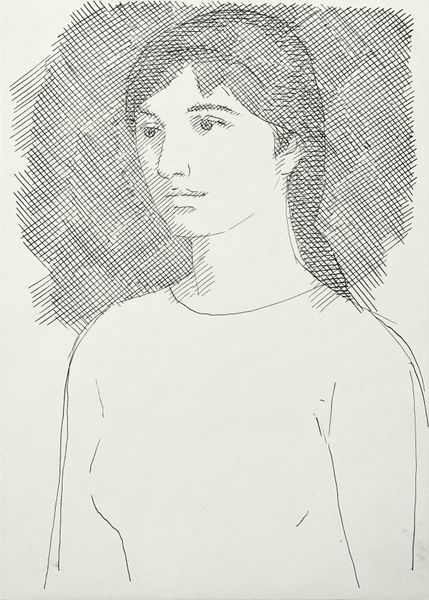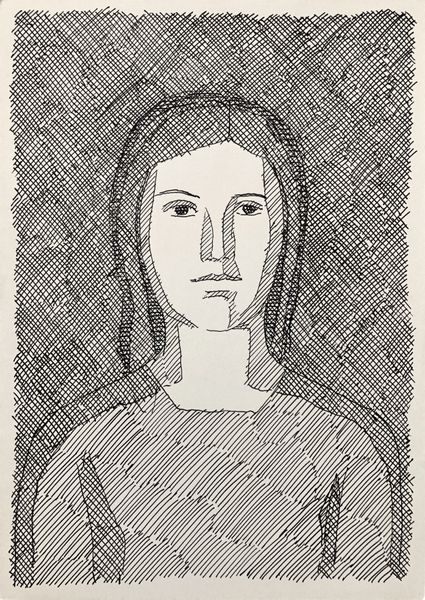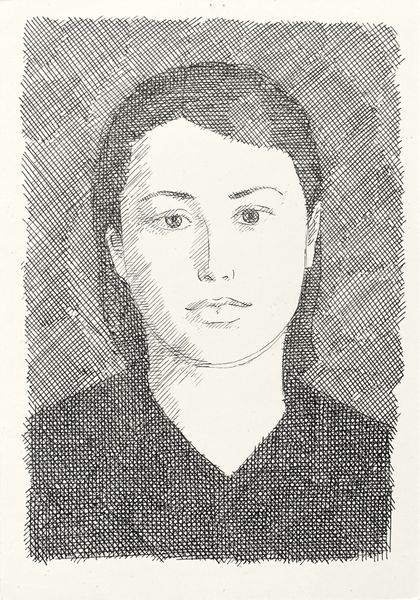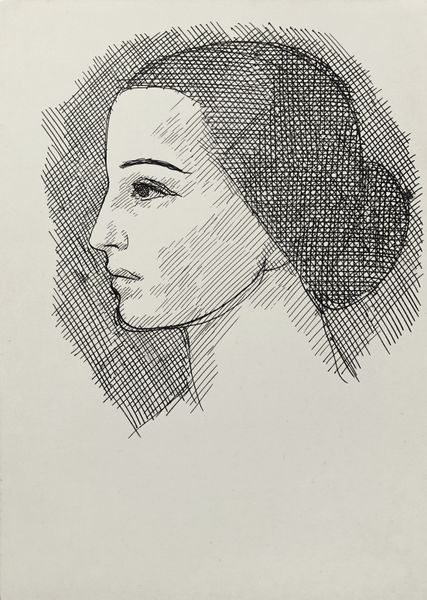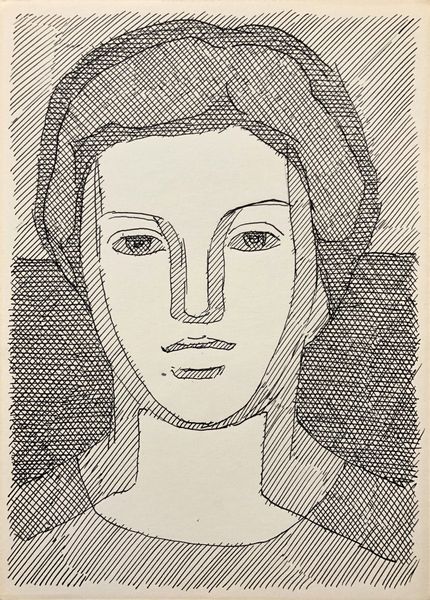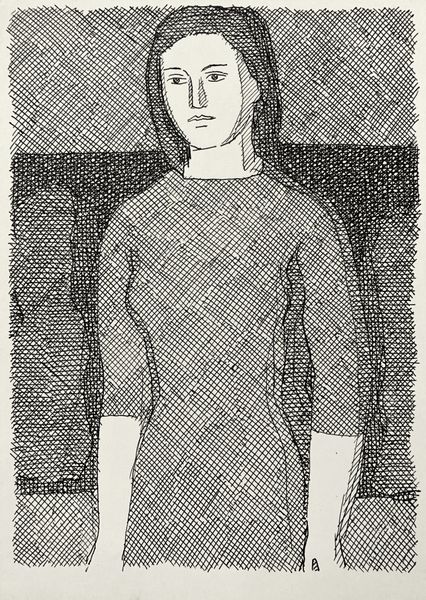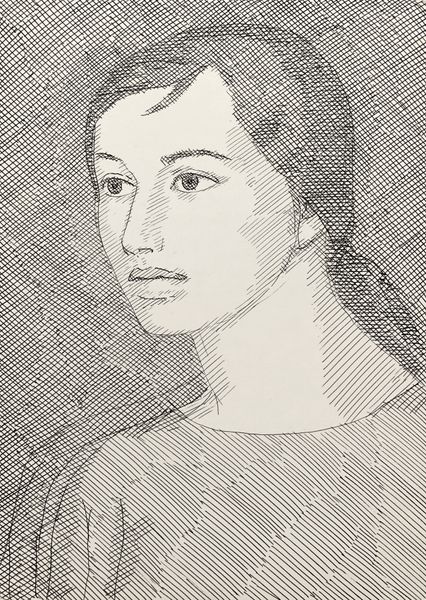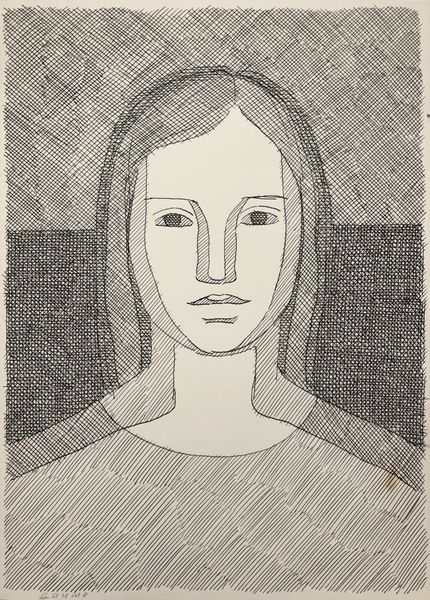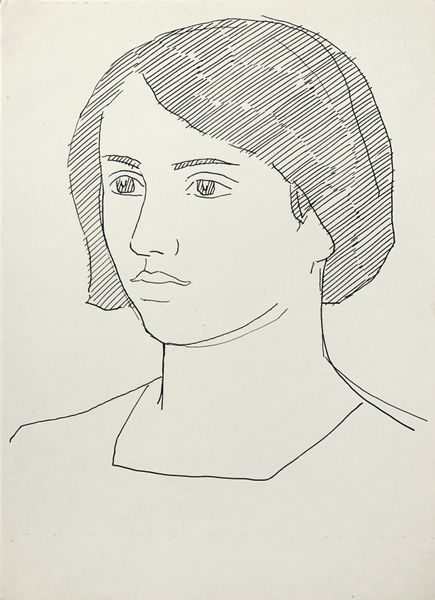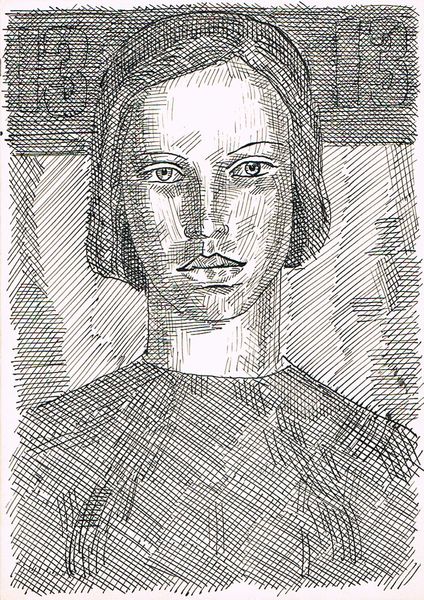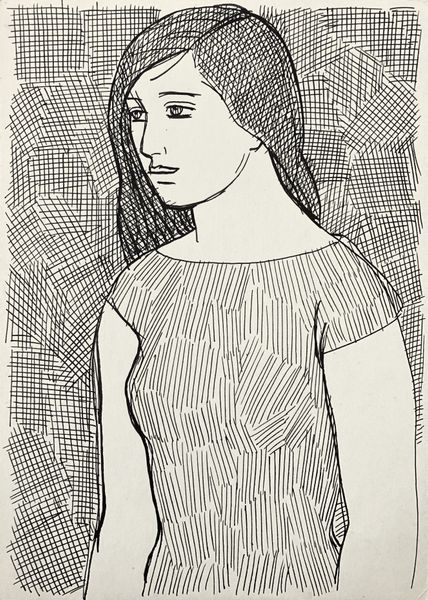
drawing, pen
#
portrait
#
pencil drawn
#
drawing
#
pencil drawing
#
line
#
pen
#
portrait drawing
Copyright: Hryhorii Havrylenko,Fair Use
Editor: Here we have Hryhorii Havrylenko’s “Female Image” from 1975, a pen and pencil drawing held in a private collection. The meticulous lines give it a striking, almost graphic quality. How do you interpret this work through a formal lens? Curator: I’m immediately drawn to the rigorous application of line in this portrait. Notice the cross-hatching technique used to create tonal variations; it's almost scientific in its precision. The contrast between the densely hatched hair and background, against the relatively untouched expanse of the face, is particularly compelling. Editor: I see that, and I’m wondering if the artist’s intent was to highlight the figure through this contrast. Is it that the hatching works as negative space? Curator: The hatching creates a sense of depth and volume without relying on traditional shading. We must consider the materiality of the marks themselves. How does the repeated stroke, its direction and density, generate the portrait's visual structure and affect its reading? What does the application signify in terms of labor and the artistic process? Editor: So you’re saying it is more about the form and the method used? Not so much a representation of reality but the formal components creating the image itself. Curator: Precisely. It directs us away from simply seeing a likeness, and towards an appreciation of the artist's choices in building that likeness. The image functions almost as a study in pure form, line, and texture. And while seemingly simple in its materials, that simplicity directs our attention. Editor: That’s a fascinating perspective. It’s pushed me to think about the technique itself as part of the art. Thank you. Curator: A pleasure. Considering art in terms of its formal components offers a vocabulary beyond simple recognition.
Comments
No comments
Be the first to comment and join the conversation on the ultimate creative platform.

